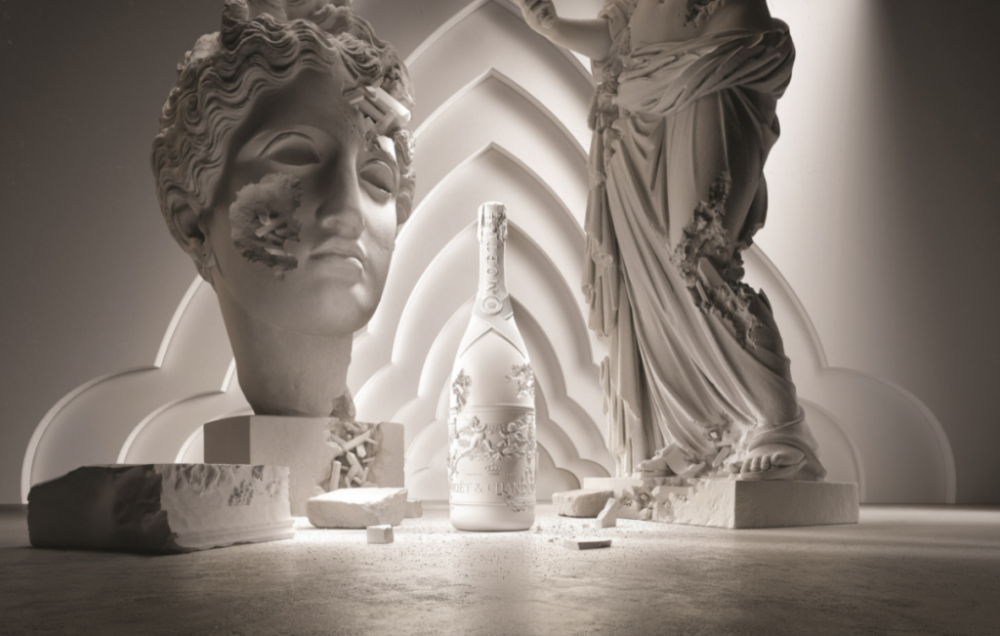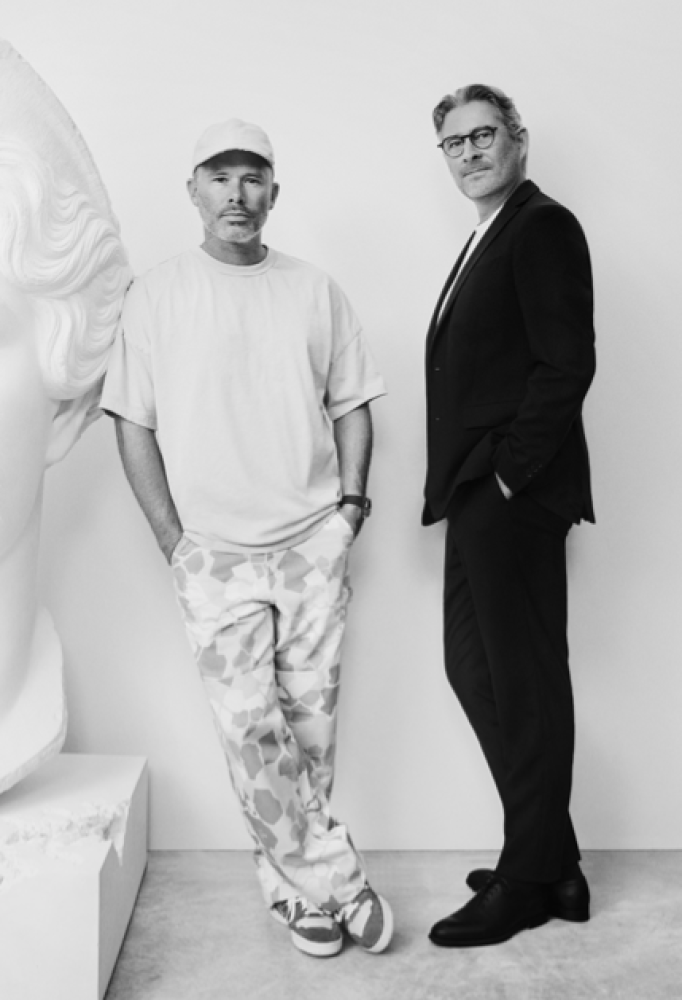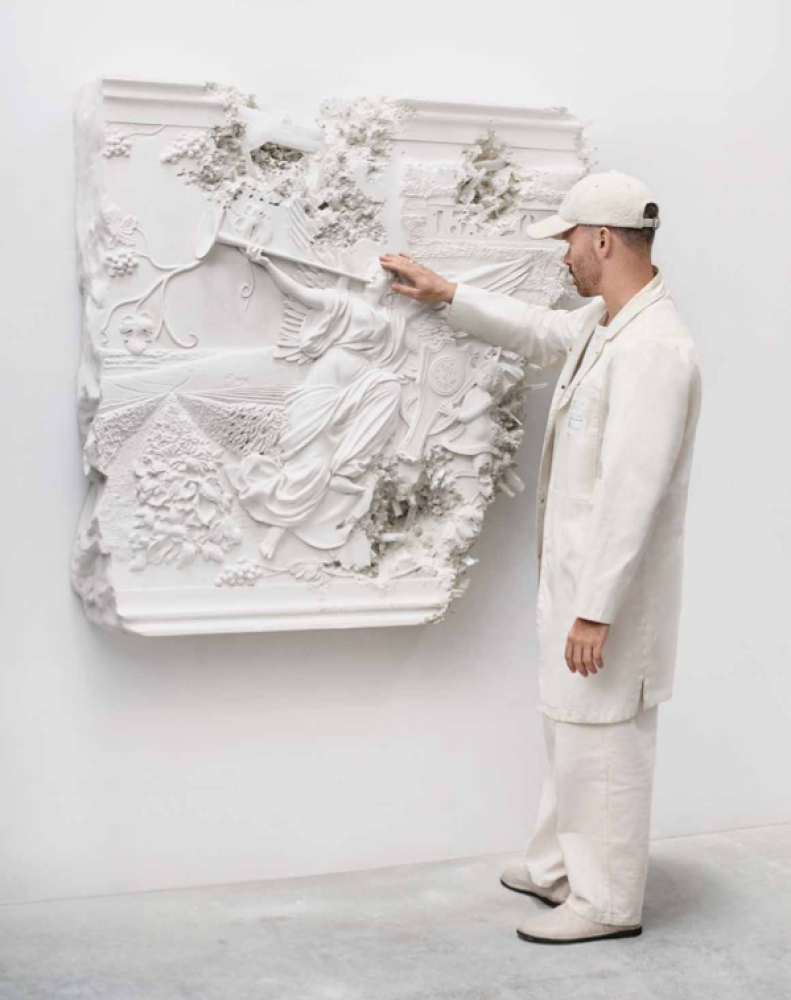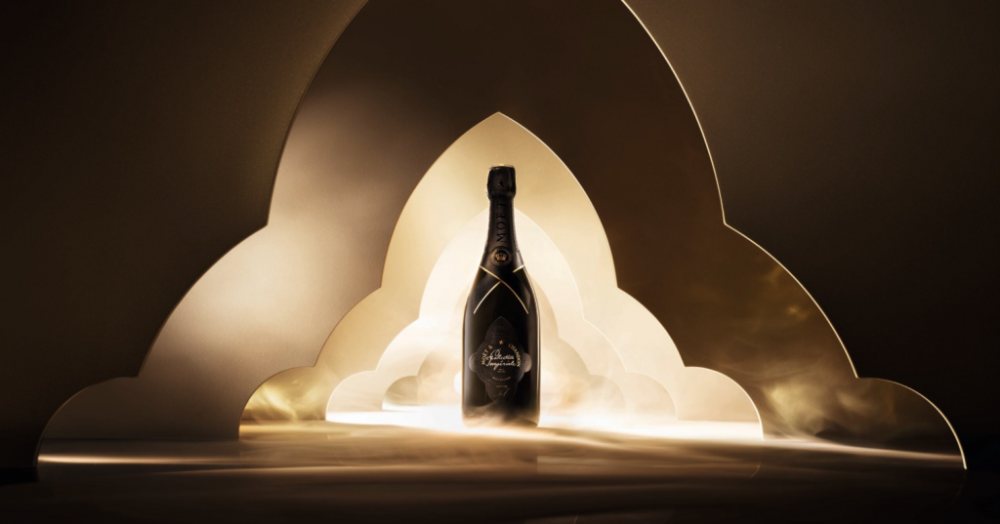Moët & Chandon on their new Collection Impériale and working with Daniel Arsham
Aug 21, 2024
Moët & Chandon celebrates 280 years with the new Collection Impériale Création No. 1, a timeless creation of intricate complexity and the highest expression of the maison’s founding vision. Marie-Christine Osselin, wine experience manager at Moët, takes Stephenie Gee through the new release and working with Daniel Arsham

Once upon a time, an Épernay vintner found himself the owner of a winery. The Frenchman, Claude Moët, had long been driven by a vision of transforming his little-known regional wine into a favourite of cosmopolitans and courtiers throughout the region, and began shipping bottles of it from Champagne to Paris. It was there it enjoyed its first success, when Moët was called upon by Madame de Pompadour, chief mistress of Louis XV and a formidable arbiter of taste, to bring Champagne to the court. “Champagne is the only wine that leaves a woman beautiful after drinking,” she famously quipped, and Moët (pronounced mo- wet, never mo-ey) instantly became the drink of French royalty, setting it on the path to becoming the international icon of luxury and celebration it is today.
That was 280 years ago, and to mark the milestone, Moët – the maison was renamed Moët & Chandon in 1833 when Claude’s grandson’s son-in-law Pierre- Gabriel Chandon de Briailles joined the business, but is still often referred to simply as Moët – has introduced a new creation: Collection Impériale Création No. 1. The inaugural release of the Collection Impériale line, Création No. 1 is the first of a series of cuvées d’exception leading up to Moët’s 300th anniversary in 2043 and the ultimate composition to date of Moët’s art of haute oenologie (if its flagship non-vintage Moët Impérial is prêt-à-porter and Grand Vintage sur measure, then the new Collection Impériale is haute couture, or rather haute oenologie).

Anchored in centuries-old savoir vin, the effervescent liquid is an assemblage of seven hand-selected vintages overseen by esteemed cellar master Benoît Gouez. It begins with the base, the vibrantly fresh 2013 Grand Vintage aged in stainless steel tanks, which accounts for 42.5% of the blend. Another 42.5% is made up of reserve wines from five further vintages – namely the refined 2012, powerful 2010, tense 2008, full-bodied 2006 and lively 2000 – all aged in 10-year-old 5,000-litre oak casks to develop roundness, smoothness and unctuosity. The final addition is a generous 15% of a 2004 vintage emptied into the blend from bottles ageing on lees.
To further commemorate the occasion, Moët tapped American artist Daniel Arsham to capture the art of its craft. Housed in Galerie Impériale, the cellars of Moët, Arsham’s pièce de resistance is a 3-metre-long, 1.3-metre- high wall-mounted relief. Inspired by the stained-glass panel that has graced the entrance of the cellars since the 1890s, it encapsulates the essence of the house’s legacy with images like two putti raising a plaque adorned with its founding year of 1743; the architectural façade of the Château de Saran, the ancestral home of the Moët family; and a wooden wine barrel that pays tribute to the wine expertise and imperial connection that distinguishes the house. White cast resin was Arsham’s medium of choice, a knowing nod to the chalky soils of the Champagne region and the walls of the cellar, with subtle traces of visible erosion to instill a sense of the passage of time.
Not all Moët collectors will find their way to the maison’s cellars in Épernay. As such, Arsham also designed 85 limited-edition oversized bottles with motifs taken from his relief. Also crafted from white cast resin, these three-dimensional time capsules transcend their utilitarian purpose to stand as collectibles that will endure long after the Champagne they hold is savoured, enchanting discerning owners for years to come.
What distinguishes the Collection Impériale from the classic Moët Impérial?
The Collection Impériale is a new creation. Though to be really honest, it’s not that new for us because it took more than 20 years of development and work. But it’s the first time we’re revealing this creation in the market.
Also, with Collection Impériale, we like to say it’s the state of the art of blending. With Moët Impérial, we have three dimensions of blending. We blend three grape varieties – Chardonnay, Pinot Noir and Meunier. We blend the crus, and we have access to close to 100% of the crus in Champagne. And we blend years. It’s non-vintage, so we have three to four years in a glass, and the main part is made from the late harvest, the freshest harvest. Then we use reserve wines to balance the freshness and energy. We use reserve wines which are the best from the previous harvest – two to three years, no more, and only kept in stainless steel vats to protect their freshness and bright fruitiness.
With Collection Impériale, we experienced a fourth dimension in the art of blending – wine ageing methods. We have three dimensions of ageing and three atmospheres of ageing: stainless steel vats, oak casks and glass bottles with the yeast. So, in this Champagne, you have the highest level of complexity in terms of blending. This is why we say it’s haute oenologie. There’s haute couture, haute joaillerie, haute gastronomie, and this Champagne is certainly haute oenologie in terms of the attention to detail, preparation of each single wine, selection of each single vintage for one reason or another, and also working on the quantity of each single wine.

In terms of quantity, you have 42.5% of base wines from 2013. Then you have the wines aged in oak. And the last part is the Grand Vintage 2004, disgorged after 10 years on the lees to be blended with the other wines. This is what we call remise en cercle, which is when you empty your bottles of Champagne into a tank and send it back to the winery. Normally it’s when you have a problem with the Champagne. But here it was to recreate a new wine, recreate a new prestige cuvée, recreate a new way to explore the complexity of blending Champagne. And it took more than 20 years.
This is also a wine that expresses that spirit of transmission of Moët & Chandon – created in 1743, still working in 2024 on the evolution of Moët and Champagne, always trying to go further. It’s really in the DNA of all the people who work in the winemaking team – this idea of transmission. We have the chance to work with the wines from the previous harvest because the previous generations of winemakers gave them to us and we have a responsibility to prepare for the future. So, we will give all the wines we are working on to the future winemakers for them to express the future of Moët & Chandon.
Also see: Where and what to eat in Hong Kong
What can we expect when we open a bottle?
On the nose, there are smoky notes, green notes, tertiary notes of maturation due to those eight years of maturation on the lees, plus the part of a Champagne that expresses its strong reductive notes. After the Champagne warms a little, you have access to sweet, spicy notes that are due to the oak ageing of the different vintages we have selected. So it brings to the nose nutmeg notes, cinnamon, cloves, sage, liquorice and white pepper. And then you catch the famous fruitiness of Moët & Chandon – a concentrated fruitiness like dried fig, dried apricot, dried pear. It’s really those multiple layers of vintages plus the time of maturation and the different ageing methods that create this very intense and multilayered bouquet.
On the palate, it’s a Champagne that has, again, multiple phases. At first it’s very enveloping. The acidity is very well integrated. And then you have a very creamy taste on the palate. The finish is kind of surprising because it’s a bit salty. Our habit is to have a finish which is citrusy or which has this grapefruit bitterness, as is the case for the Grand Vintage 2013. But this impressive saltiness on the tongue at the end of Collection Impériale, it’s kind of a new way to enjoy the finish of a Champagne. And we decided to make it a brut nature. We decided to not add any sugar because it’s complete like this, which makes this Champagne very, very unique: the first-ever Champagne brut nature in the history of Moët & Chandon.

What’s next for the Collection Impériale line?
This is Création No. 1. No. 2 is under process. No. 3 also, because it takes eight years of maturation. And the purpose is to do a countdown until the 300th anniversary of the maison. So until 2043, we will deliver a new creation every two years. The spirit of the Champagne will be the same, but it will not necessarily have the same vintages or amount of vintages or be made as brut nature. Every single creation will be unique.
Tell us more about the collaboration with Daniel Arsham.
Because it’s a collection, we had the idea to celebrate in the same way as an artist and to work with an artist to create for us a collection of masterpieces. We chose Daniel Arsham for his interpretation of time. He’s from New York and he’s working on the footprint of time. His purpose is to take a piece, bring it to the future, bring it back to the present and see what happens. You see crystals, which present this idea that through time, some things are deconstructed and some things are constructed. And we really loved this idea.
Daniel Arsham came to Épernay and had a tasting with Benoît Gouez, and he was really inspired by many things – the Château du Saran, which is our guest house in Moët & Chandon, but also the cellars, the vines, everything. He did a big masterpiece placed in the cellars of Moët & Chandon, and he also made 85 limited-edition pieces for art collectors. It’s very good to be inspired by his work and to inspire him as well. It’s a really interesting way to work on a new prestige cuvée.
Also see: Waris Ahluwalia on launching his non-alcoholic sparkling drink in Hong Kong and mindfulness





























